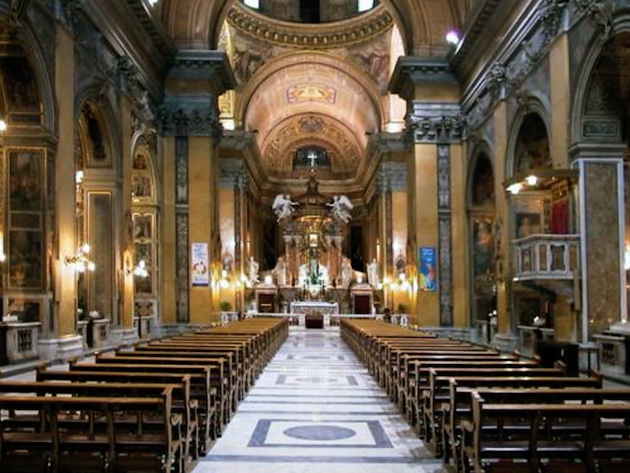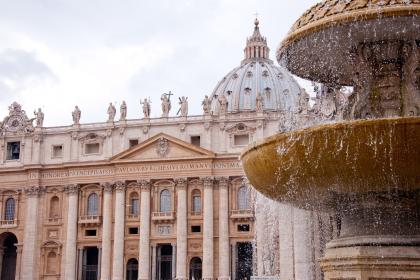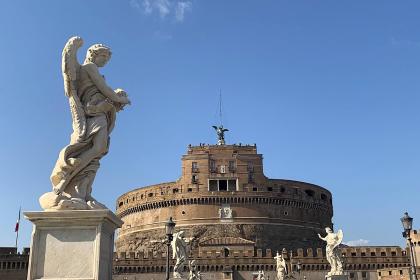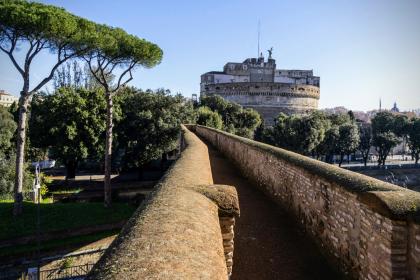
The Church of Santa Maria in Traspontina is located in via della Conciliazione, in the Borgo district, a few steps from the Vatican. It was rebuilt in 1566 based on a design by Giovanni Sallustio Peruzzi, with contributions by Ottaviano Mascherino and Francesco Peparelli, in place of an older one, demolished in 1564 by Pope Pius IV because it was an obstacle to the trajectories of Castel Sant'Angelo bombards.
The church probably occupies the place where an ancient Roman tomb in the shape of a pyramid stood, which in the Middle Ages was believed to have been the tomb of Romulus.
The large façade has two orders of pilasters, which divide it into five bays in which three portals and two niches open up; the three upper bays, on the other hand, have two blind windows and lateral connections. Above the main portal with marble columns, there is a niche in which the group of the Madonna and Child in stucco is placed, from the 18th century. The interior, in the form of a Latin cross, has a single nave, five chapels on each side and a magnificent dome - the work of Mascherino - without a drum, so wanted by the bombers of Castel Sant'Angelo so as not to hinder the firing of the bombards placed on the castle ramparts. The same artillerymen of the Castle had in this church, in the Chapel of Santa Barbara, their place of prayer. Among the works of art inside, the magnificent Baroque altar by Carlo Fontana from 1674 is worthy of note, which houses an icon with the image of the Byzantine Madonna. This icon, according to an ancient tradition, was brought by the Carmelite fathers to Europe at the time of their migration from Mount Carmel, in the first half of the XIII century. The current image is a late copy of the original, which was lost during the period of the Roman Republic (1798-1799).
Photo credits: courtesy of the Church of Santa Maria in Traspontina official site
The Basilica of St. Peter in the Vatican

 Condividi
Condividi
The Mausoleum of Hadrian - Saint Angel Castle

 Condividi
Condividi
The Passetto di Borgo

 Condividi
Condividi
Information
Mass times
Mondays: 07.30, 09.00, 18.30Tuesdays: 07.30, 09.00, 18.30Wednesdays: 07.30, 09.00, 18.30Thursdays: 07.30, 09.00, 18.30Fridays: 07.30, 09.00, 18.30Saturdays and public holidays: 09.00, 18.30Sundays and public holidays: 08.00, 09.30, 11.00, 18.30
Times are subject to change, so please always contact the church
 Condividi
Condividi
Location
To find out about all accessibility services, visit the Rome accessible section.











































